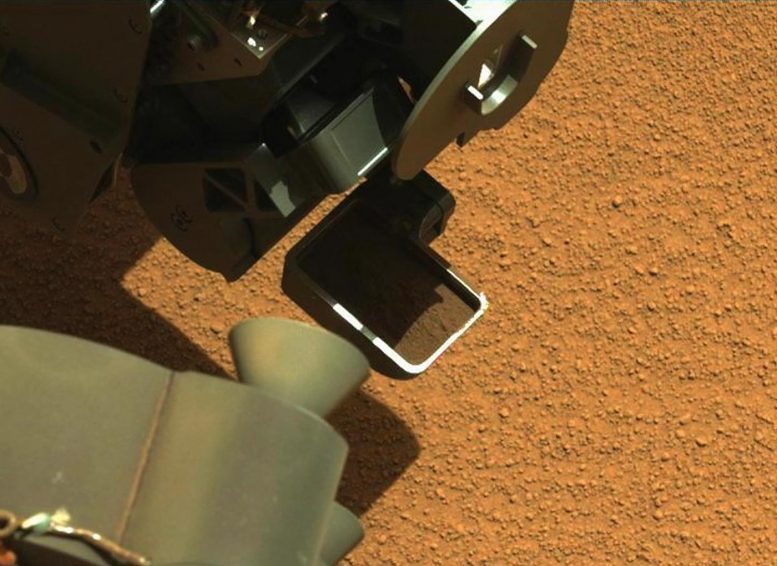
The first Martian material collected by the scoop on the robotic arm of NASA’s Mars rover Curiosity. Credit: NASA/JPL-Caltech/MSSS
Earth’s most arid desert may hold a key to finding life on Mars.
Diverse microbes discovered in the clay-rich, shallow soil layers in Chile’s dry Atacama Desert suggest that similar deposits below the Martian surface may contain microorganisms, which could be easily found by future rover missions or landing craft.
Led by Cornell University and Spain’s Centro de Astrobiología, scientists now offer a planetary primer to identifying microbial markers on shallow rover digs in Martian clay, in their work published today (November 5, 2020) in Nature Scientific Reports.
In that dry environment at Atacama, the scientists found layers of wet clay about a foot below the surface.
“The clays are inhabited by microorganisms,” said corresponding author Alberto G. Fairén, a visiting scientist in the Department of Astronomy at Cornell University. “Our discovery suggests that something similar may have occurred billions of years ago — or it still may be occurring — on Mars.”
If microbes existed on Mars in the past, their biomarkers likely would be preserved there, Fairén said. “If microbes still exist today,” he said, “the latest possible Martian life still may be resting there.”
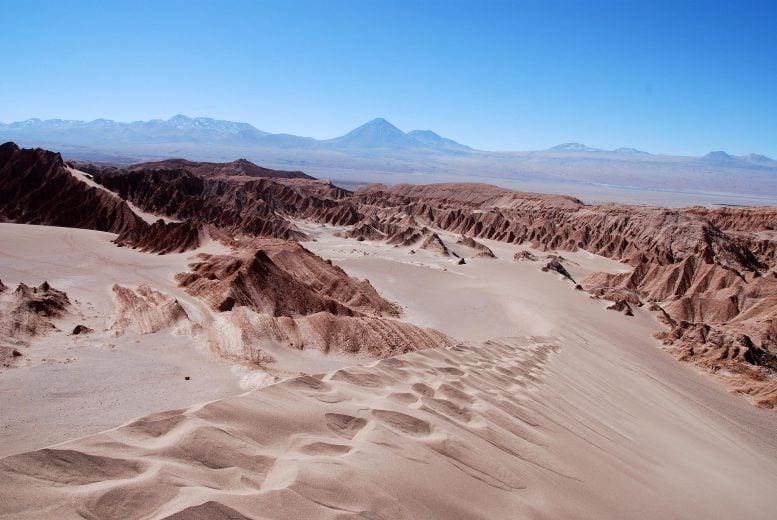
Scientists from Cornell and Spain’s Centro de Astrobiología have found that Earth’s most arid desert – Chile’s Atacama Desert, shown above – may hold a key to finding microbial life on Mars.
The red planet will see rovers cruising across the surface there in the next few years. NASA’s rover Perseverance will land on Mars in February 2021; Europe’s Rosalind Franklin rover will arrive in 2023. Both of those missions will seek microbial biomarkers in the clay below the planet’s surface.
“This paper helps guide the search,” Fairén said, “to inform where we should look and which instruments to use on a search for life.”
In the Yungay region of the Atacama desert, the scientists found the clay layer, a previously unreported habitat for microbial life, is inhabited by at least 30 salt-loving microbial species of metabolically active bacteria and archaea (single-cell organisms).
The researchers’ Atacama discovery reinforces the notion that early Mars may have had a similar subsurface with protected habitable niches, particularly during the first billion years of its history.
“That’s why clays are important,” he said. “They preserve organic compounds and biomarkers extremely well and they are abundant on Mars.”
Reference: “Inhabited subsurface wet smectites in the hyperarid core of the Atacama Desert as an analog for the search for life on Mars” by Armando Azua-Bustos, Alberto G. Fairén, Carlos González Silva, Daniel Carrizo, Miguel Ángel Fernández-Martínez, Cristián Arenas-Fajardo, Maite Fernández-Sampedro, Carolina Gil-Lozano, Laura Sánchez-García, Carmen Ascaso, Jacek Wierzchos and Elizabeth B. Rampe, 5 November 2020, Scientific Reports.
DOI: 10.1038/s41598-020-76302-z
The paper’s lead author is Armando Azua-Bustos, a researcher on Fairén’s team at the Centro de Astrobiología, Madrid.
The research was funded by the European Research Council.


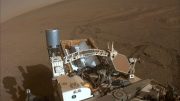

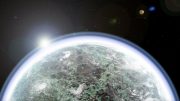
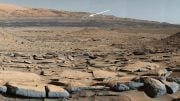
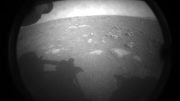
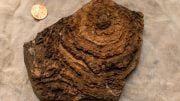

Thank you